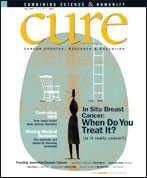Do Women Under 50 Need Mammograms?
The risks and benefits of mammography screening vary by age—the benefit for women over age 50 has been proven, but debate continues about the benefit of screening younger women, beginning at age 40.
While the benefit of breast cancer screening for women over age 50 has been proven, the question of screening younger women ignites a firestorm every time it comes up.
The balance between the risks and benefits of mammography differ by age because of changes during menopause, differences in breast tissue density of younger women compared with older women, and differences in tumor characteristics seen in younger women. In the United States, it is recommended that women have mammograms every one to two years beginning at age 40 and then annually starting at 50. But in Britain and other European countries, screening usually begins at age 50 unless a woman is at increased risk based on her family history.
Panels of experts have reviewed the same evidence yet come to different conclusions about the benefits of screening for women ages 40 to 49. The studies have been interpreted and reinterpreted. Even the National Cancer Institute wavered in 1993, dropping its recommendation that women should have mammograms beginning at age 40, citing research that failed to show a decrease in mortality, only to reinstate the 40-and-up guideline in 1997 after updated data were released.
Reviewers have written passionate articles and letters, with each side accusing the other of shoddy science. A 2003 review of the evidence in The New England Journal of Medicine, which found a 20 percent reduction in breast cancer death in the 40- to 49-year-old group, generated letters to the editor saying the percentage was too large and others saying it was too small.
Most studies indicate at least some benefit of screening mammography for women in their 40s, but a few have found no benefit at all. A large study in Britain is revisiting the issue and will hopefully provide definitive answers. An interim analysis of the study projects about a 10 percent reduction in breast cancer deaths.
Mammography, though, is not without some risks. A false-positive result means that a mammogram appears abnormal even though no cancer is present, which can result in emotional distress and an increased financial burden. For a woman in her 40s, a positive result on a mammogram is more likely to be a false positive than to indicate breast cancer, but the risk of false positives decreases with age. A false negative means that a test appears to be normal even though cancer is present. Mammography may miss 20 percent of cancers and false negatives occur more often in younger women because their breast tissue is denser. (Doctors suggest women have mammograms after their menstrual cycle because as the menstrual cycle approaches, many women’s breasts become engorged.) One of the risks involved in a false negative is that a woman may delay seeking treatment, even though symptoms develop, thinking she is safe because the mammogram was clear.
Though the dose of radiation during a mammogram is very low, radiation exposure is also a risk factor for developing breast cancer. However, the risk of cancer is higher in women with high-dose or prolonged exposure, making past history a factor in the risk-benefit analysis for deciding the age at which to begin having mammograms.
The information women receive from media outlets and cancer organizations may be biased toward screening under 50, but a woman should make an informed decision based on an understanding of the risks and benefits.
